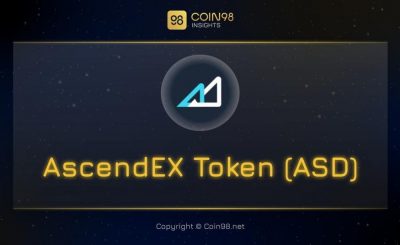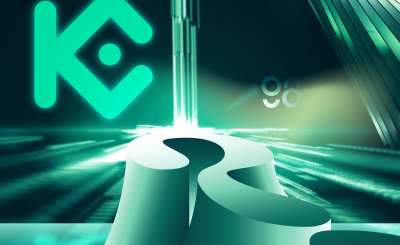With the current ways of distributing tokens, there are some disadvantages such as non-decentralization, no liquidity, … Delphi Digital – a well-known investment fund with a lot of experience in project tokenomics design , has launched a new way of distributing tokens, which is Lockdrop + LBA (Liquidity Bootstrap Auction).
Reality and disadvantages of token distribution
Currently, in Crypto, there are the following ways of distributing tokens:
- Distributed to users through actions in the past or future. Past actions are Airdrops; in the future is to provide liquidity, for example.
- Token Sale: Community can buy tokens through mechanisms such as buying at fixed price, auction, LBP,…
But all of the above methods have certain disadvantages. Below is a breakdown of the limitations of each way:
Distribute to users through action
With Airdop, the community will be rewarded with tokens for having experienced the project before. But the actual Airdrop is meant to reward those who find and try the project in the past, not guarantee they will accompany the project in the future. In fact, the Airdrops after receiving most of them are discharged.
The second way is to interact with the project as providing liquidity. The downside of this is:
- Whales with large capital will earn the majority of tokens, which is not fair to retail investors, although some even contribute a lot.
- Tokens on the initial market will be low, lack the Price Discovery mechanism (price discovery process), low liquidity. This makes it impossible for those who want to buy in large quantities, as well as later facing selling pressure from inflation.
Token Sale
Selling tokens will solve the Price Discovery problem, but still suffers from some disadvantages:
- May be affected by law, because a Public Sale can be viewed as a sale of unregistered securities.
- Liquidity is low, because a certain amount of capital is required to get good liquidity. And the project is very difficult to get this money.
- To be affected by something Front-run of Bot.
5 factors that create a good token distribution model
- Distribution way: The project must bring the token to the users in the most fair way, not affected by Bot. And most importantly, low-budget players also have a chance to get tokens, if they commit to the project.
- Price Discovery: Tokens must be distributed in a decentralized, fair, mechanism to find the right price before the token is officially opened for sale.
- The number of tokens on the market is just enough: The initial amount of tokens on the market must satisfy the buying and selling needs for the Price Discovery process to find the right price. It should be at least 5% of the total supply.
- Liquidity: Once a fair price is established, the next important thing for a token is to have deep enough liquidity so that transactions are not blocked. Slippage (sliding price) too big.
- Decentralized: Decentralization is reflected in Price Discovery and liquidity due to the actual needs of the community, not through Venture Capital or project team.
Solution: Lockdrop Model + LBA with Astroport
Delphi Digital proposes solutions to solve the above problems through Lockdrop + LBA, including 2 stages:
Stage 1: Lockdrop
Lockdrop also known as Distribution Phase, is a period of time that users will commit in advance (lock tokens). After the end, they will be notified of the amount of tokens received back based on the locked amount and the lock time. Tokens will be locked until the end of Phase 2.
Meaning:
- Distributing tokens to users based on the value they contribute to the project. Lockdrops are different from Airdrops in that instead of being grateful for past actions, Lockdrops are geared toward future commitment, which is manifested by the amount of money being locked up for a long time.
- The calculation of the token distribution will be based on a number of factors such as the number of tokens allocated to the total program, or each Pool (for AMM). In addition, the ratio of the user’s LP to total LP, which needs to be adjusted for the timing of the liquidity provision, is also a factor in the formula. This would be more accurate than just looking at (Individual LP/Total LP).
Stage 2: LBA
LBA (Liquidity Bootstrap Auction) is also known as Price Discovery Phase. At this point, Phase 1 participants can choose to provide liquidity. Assume with project Astroport (ASTRO), users can provide ASTRO, or both ASTRO and UST in Pool ASTRO – UST. The final ratio of the two tokens will determine the price of ASTRO.
For liquidity providers, they will receive a portion of bonus tokens, as well as the benefits of regular liquidity providers. In addition, the token when providing liquidity will be unlocked gradually over 3 months, which avoids sudden liquidity withdrawal. For those who don’t want to provide the bar in Phase 2, they will get their tokens back.
Meaning:
- Spot the token price, as well as make sure there’s deep enough initial liquidity at that price.
- The specific pricing is as follows: For example, with Astroport, with 100 ASTRO and 100 UST, the ASTRO price will be $1. If 100 more USTs are deposited, the price of ASTRO will be $2.
Special point in setting the time of Lockdrop + LBA . pattern
Delphi Digital’s Lockdrop + LBA model doesn’t just stop at the token distribution, but also on how to set the time and conditions of both Phases 1 and 2. Below is a brief overview of the token sale of the company. Astroport (time will count down from day 14 to day 0 – ASTRO Launch date):

State 1:
- Day 14 – 10: User commits by locking LP token of TerraSwap. At this time, anyone who wants to withdraw LP can withdraw 100%.
- Day 9: Only 50% LP can be withdrawn, the rest will still be committed.
- Day 8: LP is withdrawn gradually from 50% → 0% during the day.
Phase 2:
- Day 7 – Day 3: Those who have committed can lock ASTRO or ASTRO + UST in Pool ASTRO – UST. At this time, anyone who wants to withdraw tokens can only withdraw UST (100%), cannot withdraw ASTRO.
- Day 2: Only 50% UST can be withdrawn.
- Day 1: UST is withdrawn gradually from 50% → 0% during the day.
Analysis:
During the first 5 days of Phase 2 (Day 7 – Day 3), Astroport offers unlimited UST deposits, which incentivizes users to deposit up to the amount they want to deposit.
During the last 2 days of Phase 2, the permission to withdraw UST is for users to decide for themselves the ASTRO price they feel is worth it.
In particular, the withdrawal of UST in the last 2 days is limited to 50% to avoid the possibility of Whales depositing a large amount of money to push the price of ASTRO, and suddenly withdrawing at the last minute.
This case happened with the token auction of Mango Market. This makes token distribution and price discovery hit hard. Limiting UST withdrawal will avoid the manipulation of Whales, as well as when withdrawing UST less, the price will gradually decrease until the end, making the price discovery more stable.
Why should users participate in Phase 2: LBA?
So what is the reason for users to join Phase 2, when the liquidity supply is locked for 3 months? In addition, if we want to withdraw and sell or later want to provide liquidity, we can participate when Astroport officially launches without any strings attached.
That is, Astroport will have Incentives 1% ASTRO divided equally between ASTRO and UST suppliers. This can be considered as part of insurance for the next 3 months for those holding ASTRO, or as a reward for UST providers.
Suppose, there are 25M ASTRO participating in providing liquidity together with 25M UST, now, ASTRO price is $1, and 1% ASTRO bonus will be divided equally between 2 parties (5M ASTRO each). If you have 1% ASTRO (250,000 ASTRO), you will receive 50,000 ASTRO.
And after Phase 2 ends, ASTRO on the market will be 10% (lockdrop tokens) + 1% (Incentive for Phase 2), which is 11%.
summary
After going through the overview and analysis of Delphi Digital’s Lockdrop and LBA model applied to Astroport, let’s come back to see how this solves the problems outlined in the article:
- Distribution: ASTRO has been distributed fairly based on the amount of contributions. Those with little capital can raise more ASTRO through the Phase 2 liquidity provision.
- Price Discovery: Phase 2 enables price discovery through the LP Shared auction mechanism that allows buyers (users contributing UST to LP) and sellers (users contributing ASTRO to LP) to combine and determine a fair price for ASTRO.
- Number of tokens in the market: There will be 11% ASTRO on the market after the end of both Phases.
- Liquidity: Phase 2 will help Pool ASTRO – UST have deep liquidity, as well as not suddenly withdraw LP in 3 months.
- Decentralized: Decentralization is not only expressed through the token sale through commit, but also the token market is high at first, leading to the power of the team being affected, and users will have more governance rights. .
In Astroport, Lockdrop and LBA are applied together, but that doesn’t mean they can’t be used separately. Projects can, depending on specific situations, choose an individual way to apply.
What do you think about the Lockdrop token distribution model combined with Delphi Digital’s LBA? Will this be the upcoming trend of bringing tokens to the market for projects?
You can read the original post here.
Source: Decoding Lockdrop + LBA pattern via Astroport
– TechtipsnReview






